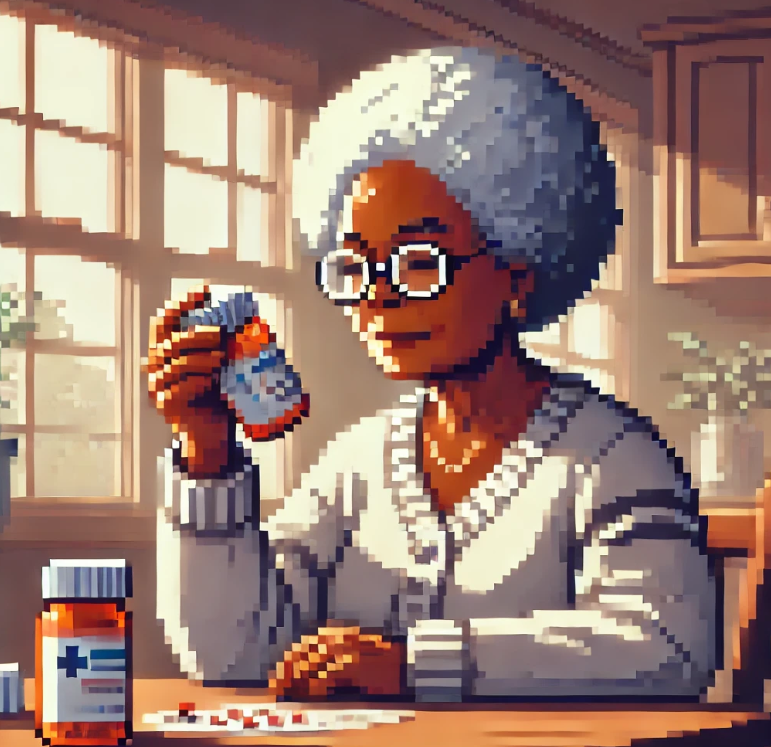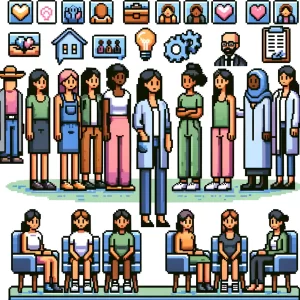
Empowering Older Adults to Use Medication Safely
Prescription medications play a crucial role in managing health, especially for older adults, but they come with risks. With the rise in medication use comes the risk of medication misuse, and older adults are among the most vulnerable. Fortunately, a new program called the Generation Rx Older Adult Toolkit (GROAT) is making strides in educating older adults about safe medication use. A recent study led by THE Ohio State University’s College of Pharmacy (OSU COP) evaluated the effectiveness of GROAT in increasing knowledge and promoting safe medication practices among older adults. The results? A significant increase in knowledge and positive changes in behavior.
But why does this matter, and how can it make a difference in public health? Let’s dive in.
Medication Misuse: A Growing Concern
As people live longer, they often rely on more medications to manage chronic conditions, increasing the risk of misuse. Misuse doesn’t necessarily mean intentional abuse—it can also involve taking the wrong dose, forgetting to take a medication, or sharing medications with others. Older adults, in particular, face unique challenges. Many are juggling multiple prescriptions and might not fully understand the potential risks of medication interactions or improper use.
The consequences can be severe. Medication misuse can lead to harmful side effects, hospitalization, or even death. The problem is even more pressing given that over half of those who misuse medications get them from friends or family, according to the National Surveys on Drug Use and Health.
The Generation Rx Toolkit: A Community-Based Approach
The Generation Rx Older Adult Toolkit, developed by The Ohio State University College of Pharmacy, aims to address these risks. The program is designed specifically for older adults and focuses on educating them about safe medication practices. What sets it apart is its community-based approach. The OSU COP partnered with OSU Extension offices across Ohio to deliver the program in a variety of community settings, from senior centers to faith-based organizations.
The program is simple but effective. OSU Extension Educators, trained as Generation Rx Ambassadors, lead educational sessions using interactive materials like trivia games and presentations. Before and after these sessions, participants complete surveys to measure how much they’ve learned and whether their behavior is likely to change.
What the Study Found: Positive Results Across the Board
Between May and September 2022, nearly 850 individuals participated in the GROAT program. After analyzing the data from 297 pre-surveys and 245 post-surveys, the results were clear: the program works. Seven out of eight questions on safe medication practices showed significant increases in correct responses after the educational sessions. Participants learned important lessons, like how to read medication labels correctly, how to store medications safely, and why it’s essential not to share prescriptions.
But it wasn’t just about knowledge—behavioral intentions improved as well. Participants reported that they were more likely to keep an updated list of their medications, ask pharmacists about drug interactions, and dispose of medications they no longer needed. These simple actions can make a big difference in preventing medication misuse.
Why This Matters: A Broader Impact on Public Health
The implications of this research extend beyond individual behavior. Older adults play a central role in their families and communities, and their habits can influence others. By educating older adults about safe medication use, the Generation Rx Toolkit also equips them to share this knowledge with younger family members. This ripple effect could help reduce medication misuse not only among older adults but across generations.
Additionally, the program’s success highlights the importance of targeted prevention education. While significant resources have been invested in youth drug prevention programs, older adults are often overlooked despite being heavy users of prescription medications. This study shows that older adults are not only receptive to education on this topic but can also benefit from it in tangible ways.
Making Prevention Education Accessible
One of the strengths of the GROAT program is its accessibility. The program was delivered in various community settings, making it easier for older adults to attend. The materials were also designed with limited literacy and visual considerations in mind, ensuring that all participants could engage with the content.
This kind of thoughtful design is critical when working with older populations, who may face challenges like declining vision or cognitive changes. By removing barriers to participation, the Generation Rx program ensures that more people can benefit from its life-saving information.
Practical Takeaways for Public Health Practitioners
For public health practitioners and researchers, this study offers a valuable model for community-based prevention efforts. Here are a few practical takeaways:
- Leverage local networks: Partnering with organizations like OSU Extension, which have deep roots in their communities, can help extend the reach of prevention programs.
- Design for accessibility: Ensure that educational materials are easy to understand and engage with, especially when targeting older adults.
- Focus on behavior change: Knowledge is important, but fostering positive behavioral intentions—like proper medication disposal—can have a more lasting impact.
Join the Conversation
What do you think about the role of older adults in medication safety? How can we better support this population in making informed decisions about their health? Share your thoughts and experiences in the comments or on social media using #SafeMeds.
Empower Your Network – Subscribe and Share!
Unlock key insights with ‘This Week in Public Health.’ Subscribe for free and share to drive change as part of a dedicated community. If you liked this blog, please share it! Your referrals help This Week in Public Health reach new readers.



